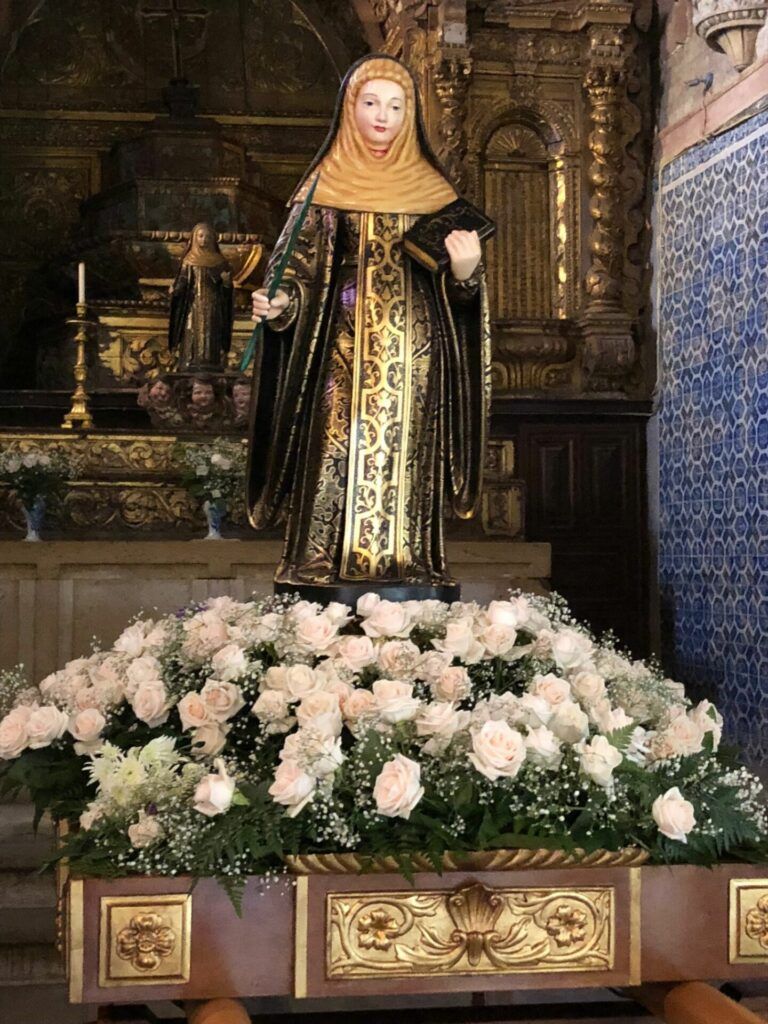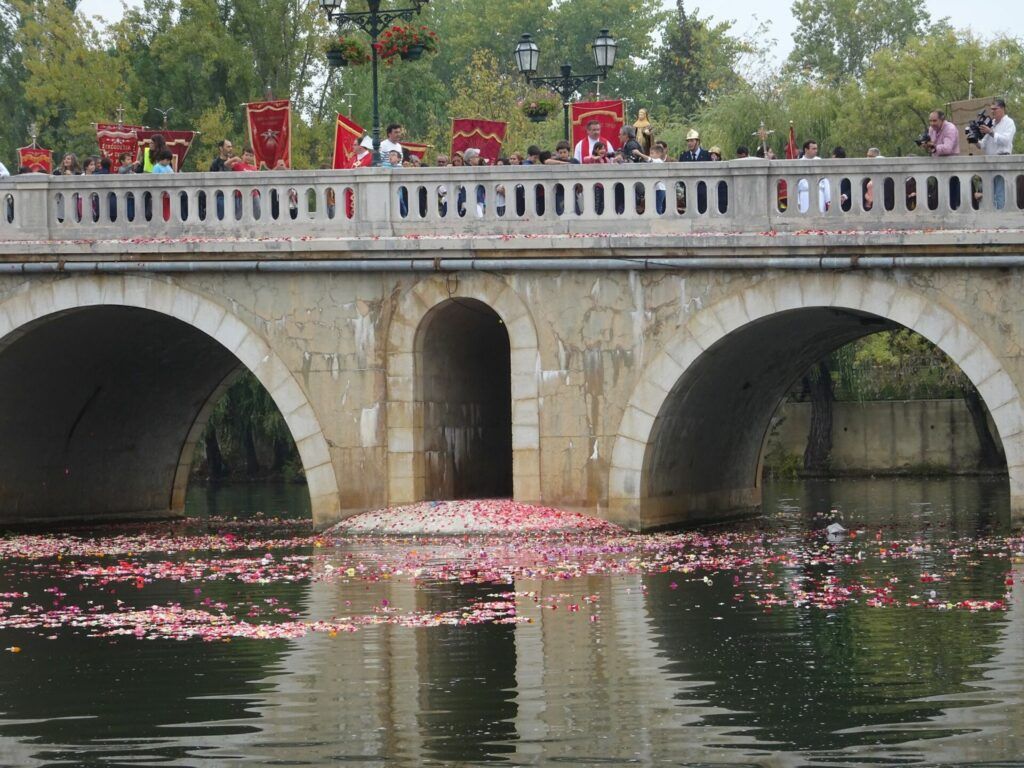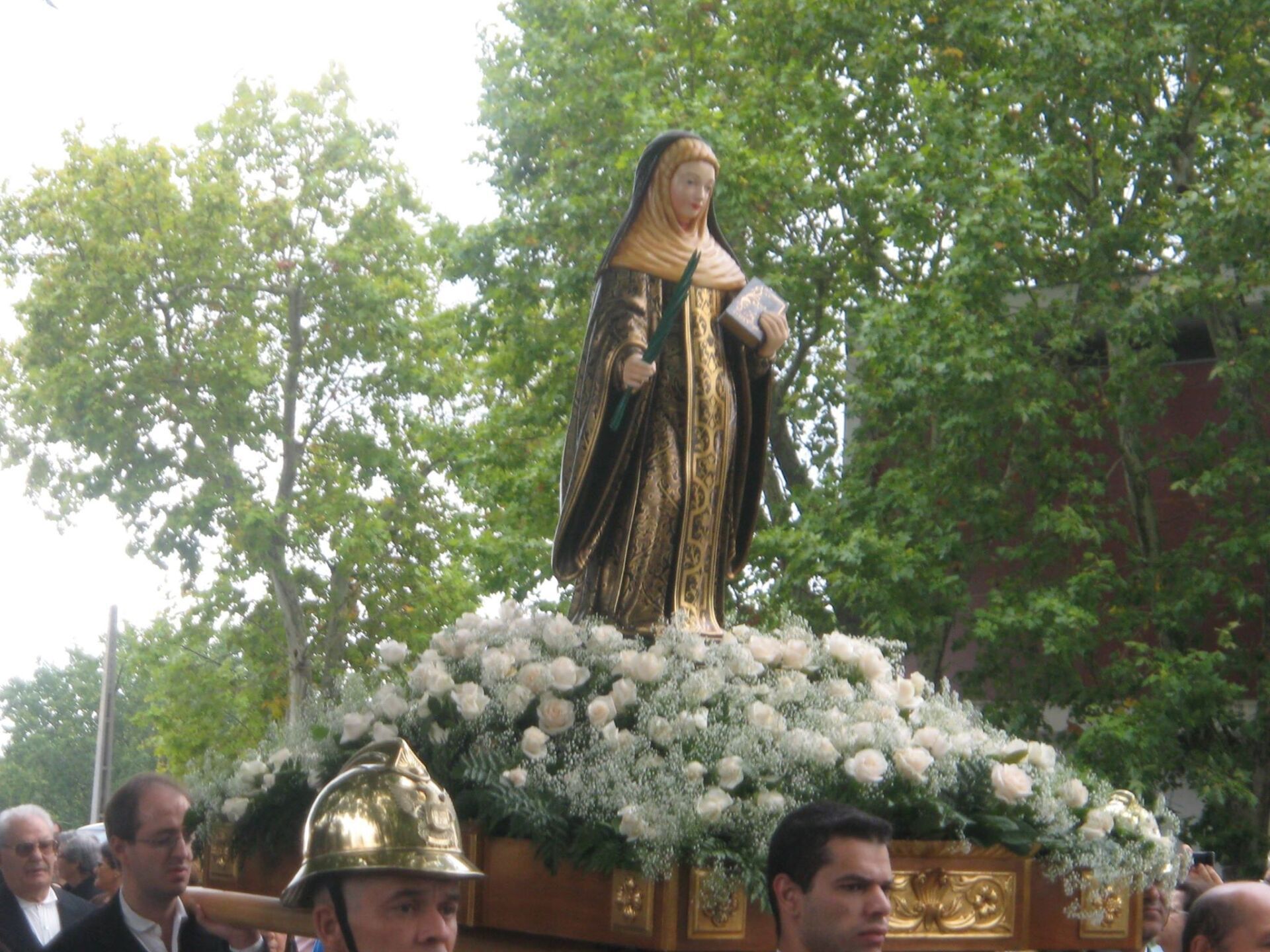On October 20th each year in Tomar, a procession takes place to commemorate Santa Iria (Saint Irene). The entire city stops to honor this young martyr with a beautiful tradition.
The story of Santa Iria has been passed on by word of mouth since the 7th century, which means that in nearly 1400 years there have been a few variations on the tale. But some things remain constant in the various versions. Iria was born in 635 in the town of Nabância, in present-day Tomar, and from a young age moved to a convent and devoted herself to God. Iria’s beauty was such that a young nobleman, Britaldo, fell madly in love with her and became sick with desire for her. When young Iria went to visit him, she refused his love saying she was already married to God. He said something to the degree of, “I can accept that, but you must promise me that the love you have refused me you will refuse to all other men as well”. Iria agreed and Britaldo was overcame his love-sickness.
Some time later, a monk named Remígio also made advances at Iria who (naturally) rejected the monk. Remígio was furious and decided to take revenge on her: he slipped her a potion that made her stomach swell. Britaldo, seeing Iria’s changing figure, assumed she had gone back on her word and become pregnant. He hired a soldier to kill her. The soldier followed Iria on the morning of October 20th, 653 to the place on the Nabão River where she would say her morning prayers, slit her throat with a sword, and threw her body in the river. When God revealed to Iria’s uncle what had happened, the entire town went to search for the body in the river. They looked far and wide and just as they were about to give up, they found a sealed marble tomb in the Tagus River near the city of Scalabis with Iria’s body buried inside. As the villagers tried to reach her body, the waters rose up, and the tomb remains underwater to this day.

According to legend, when Isabel of Aragon wanted to pray to Saint Irene at the site of the tomb, the waters miraculously pulled back to allow her to pray on the tombstone, before covering the stone again. To thank God and the saint for this, the queen renamed the city of Scalabis to Santarém (which sounds like Santa Iria or Santa Irene) and placed a marker at the site of the saint’s tomb… which is still there to this day.


Tomar celebrates this young saint’s life and death annually by having a mass in her honor, and then carrying a statue of her throughout the city. The procession stops at the bridge, where flower petals are thrown into the Nabão River and flow downstream just as her body did. Normally, school children are active participants in this, but as October 20th fell on a Saturday this year, only the Sunday school children participated. After the petals, the procession continues towards the Santa Iria chapel, where the statue is kept. Below is a video of this year’s procession.
I’m always fascinated by Portugal’s steadfast commitment to certain traditions, such as this one. I hope that, in a world of globalization and increasing external influence, we don’t lose these unique traits that add so much charm and culture to our country.


 Follow for travel tips and destinations, food, & more. Travel podcast in link. #aportugueseaffair
Follow for travel tips and destinations, food, & more. Travel podcast in link. #aportugueseaffair Have you started watching Michael Portillo’
Have you started watching Michael Portillo’



It’s been quite awhile! I’m happy you are back online. It would be a pity to loose some of the traditions and celebrations pertinent to the Portuguese due to globalization, despite the often hyperbolic narratives.
Yes, I agree.
Fascinating, and like you I hope Portugal continues to keep its traditions. We have lost so many in England and it is a poorer place as a result.
All the more reason to hold on to the ones you still have. Fingers crossed some of them “come back”, as people start to realize what they’ve lost.